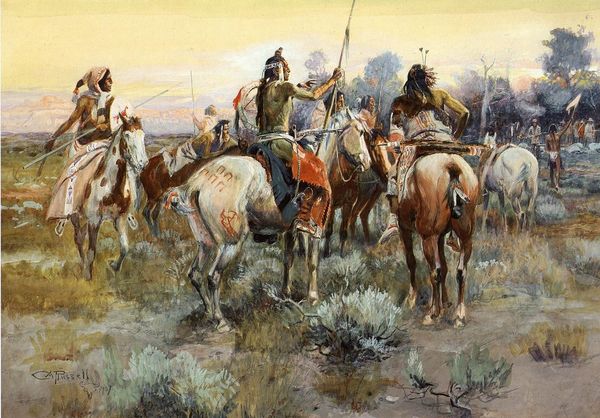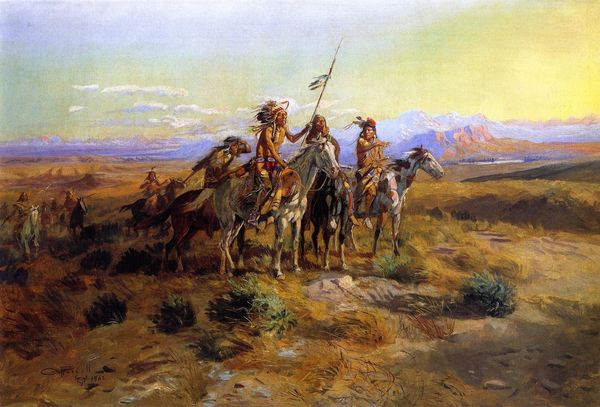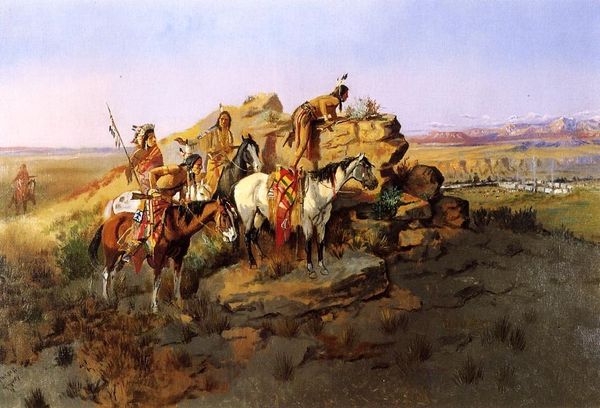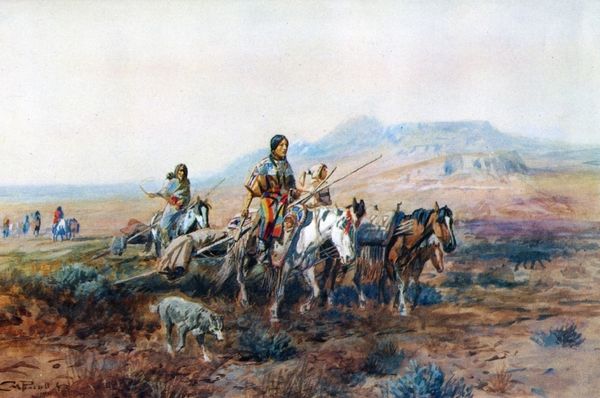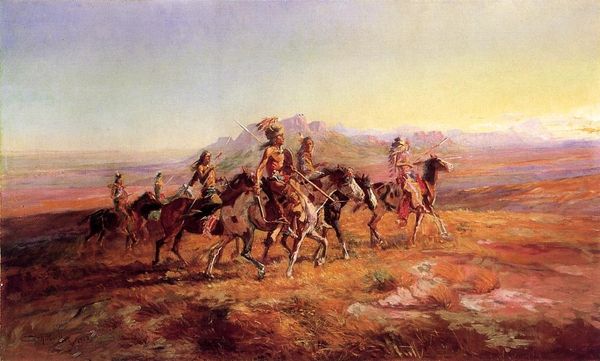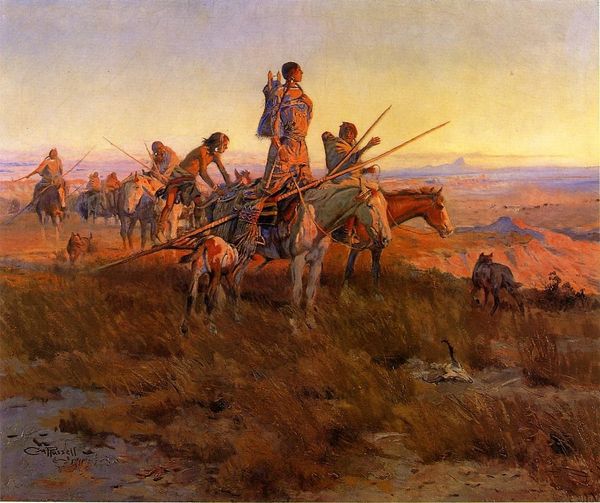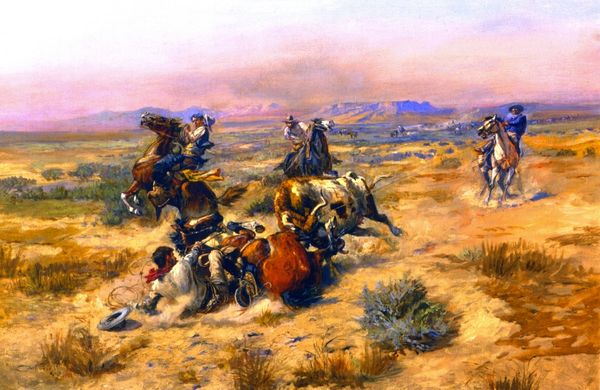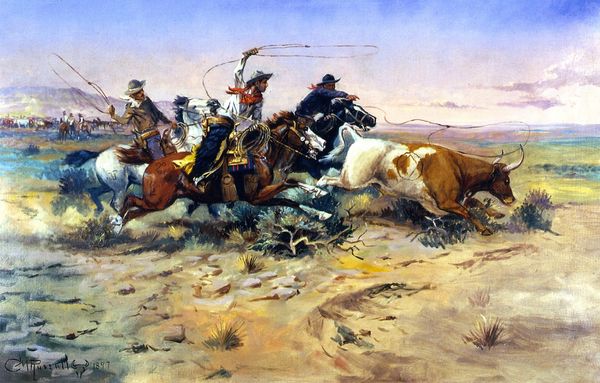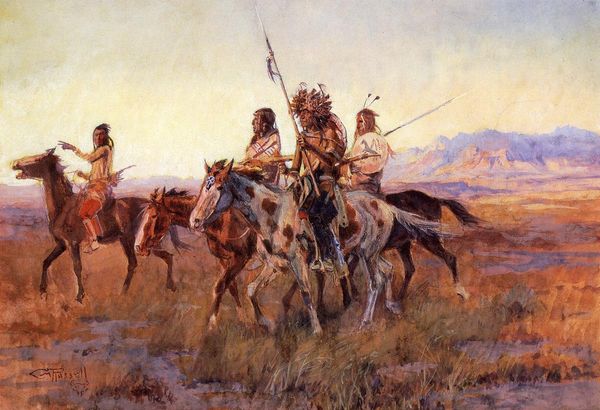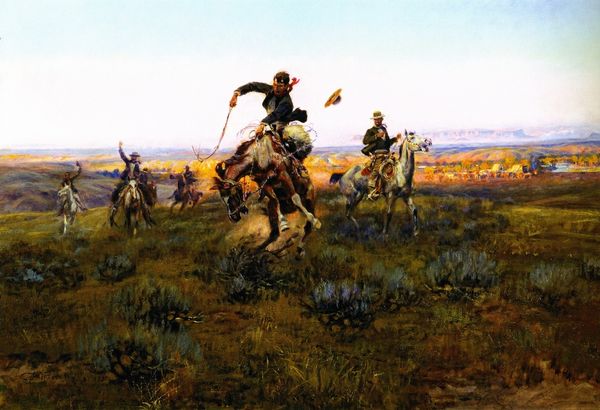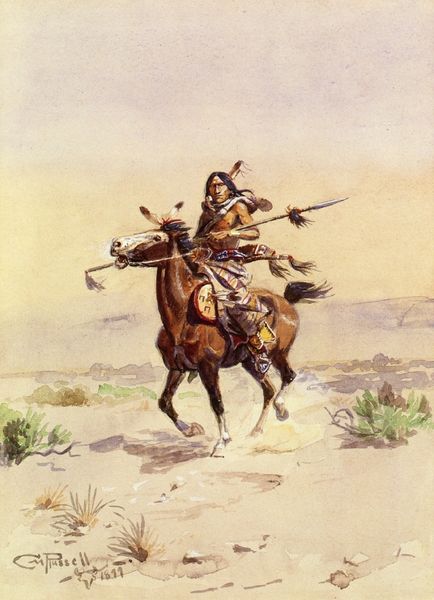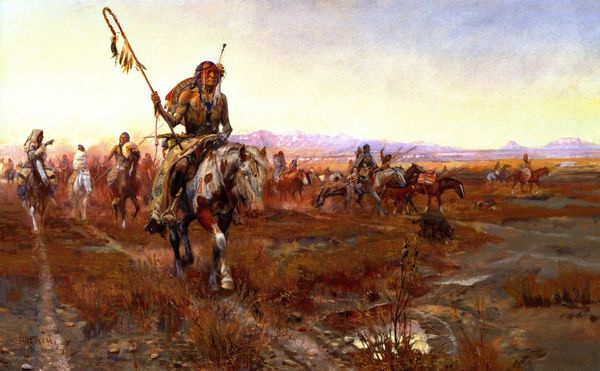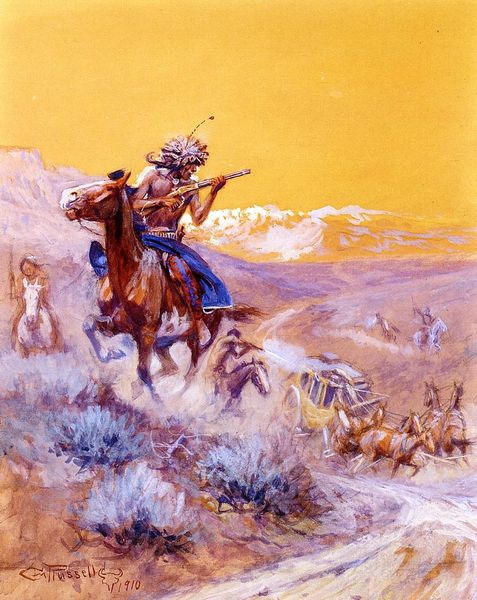
painting, oil-paint
#
painting
#
oil-paint
#
landscape
#
figuration
#
oil painting
#
history-painting
Copyright: Public domain
Curator: Charles M. Russell’s 1896 oil painting, "Indians Discovering Lewis and Clark," presents a powerful encounter staged within the American West. What are your initial thoughts on this piece? Editor: First thought? A bit ominous, really. It’s that blend of the vast landscape, almost a muted, hazy purple in the distance, contrasted with the intensity of the figures on horseback in the foreground. Makes me wonder what's about to happen... feels like a silent movie still before a dramatic turn of events. Curator: Absolutely. Russell is depicting a moment laden with historical and social weight. Here we have Indigenous peoples encountering the Lewis and Clark expedition, an event crucial to the narrative of westward expansion, yet fraught with displacement, violence, and broken treaties. The figures represent the perspectives, authority, and agency of a community on their homeland's edge who hold complex expectations about these newcomers. Editor: Right, because Russell grew up in Montana and spent a lot of time observing and learning from Indigenous people; he wasn't just painting a "scene" but embedding lived experiences. Do you see it too? Look at the way those figures on horseback are positioned – poised, observant. The composition puts them high up, emphasizing that initial vantage point. The other members moving to crest the hill at the far left feel tense; like they are being extremely watchful about their presence. The artist gives respect, while suggesting something heavy might occur. Curator: Indeed. The power dynamic, the tension... Russell's personal politics absolutely influenced his work. It can be read as a commentary on Manifest Destiny itself, challenging the dominant narrative by centering the Indigenous gaze, experience, and positioning of dominance over their lands. By using a realist style, Russell is documenting the encounter with sensitivity and empathy. Editor: I get the impression of uncertainty in his works; I can almost hear the wind rustling through the grass as they decide what move to make. Like the world is balanced on a knife's edge waiting to drop! So powerfully fragile. The muted palette does that, right? No bold primary declarations, only the feeling that everything about the landscape whispers... Curator: It absolutely resonates that way; this fragility suggests both the beauty of this geographical and cultural place as well as their imminent shattering. Appreciating these kinds of artworks reminds us that the art space itself is also a stage for broader, ongoing dialogues. Editor: I agree; and I am glad it takes us back in time and forces an acknowledgement and questioning of current realities. Every viewing of pieces like this helps shape a needed response-ability.
Comments
No comments
Be the first to comment and join the conversation on the ultimate creative platform.
